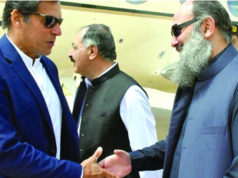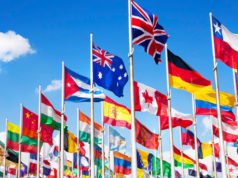 Habibullah Khan Nasar
Habibullah Khan Nasar
Recently, but amazingly, the issue of corruption appears to eclipse all other mammoth issues in public discourse casting an impression as if something strange has been revealed. Media, the agenda setter, has made the issue of corruption an agenda of national political discourse once again. Almost all the live TV primetime discourses, leading newspaper editorials and columns have been keeping the issue alive and kicking ever since the Panama Papers leaks followed by the ‘unprecedented’ Pakistan military’s ‘intentional leaks’ about the accountability decisions causing dismissal of senior military officials on charges of corruption and incompetence.
In this backdrop, is there any room to relate the issue of corruption to development in Balochistan? Is the issue of corruption interlinked with underdevelopment, backwardness, poverty and terrorism in Balochistan: The COAS has already tied together the two issues of corruption and terrorism? Can the COAS’s assumption or doctrine be applied to unrest in Balochistan: This has already been proved that the army commanders who had been tasked to counter terrorism were found guilty of corruption in Balochistan? As a matter of fact, COAS’ doctrine appears to have been proved correct but it can be extended by linking other issues such as poverty, underdevelopment and backwardness with corruption. Having said that much, it appears as if corruption is the underlying issue breeding many other menaces.
Read also: Editorial: Time to Crackdown Against Corruption in Balochistan
Let’s understand how money in public sector falls prey to corruption. First, corruption begins with allocating money for sectors that are not productive and growth-oriented and disbursing money to individuals (MPAs) to plan and execute development schemes. Public money in Balochistan is spent through two broader conduits: non-development (administration of public sector machinery) and development (public sector development program). In 2015-16 Annual Budget 189 billion (Rs) and 54.5 billion (Rs) were allocated for non-development and development (PSDP) respectively. There are many other objectionable angles of the budget, such as 26 billion (Rs) and 15 billion (Rs) allocation for security and healthcare respectively – a big question mark on the intent and ability of budget managers – but here let’s concentrate on an aspect of PSDP that is Public Representatives Programme- PRP wherein each of 65 MPAs get reportedly 250-350 million rupees annually for development schemes. Dawn News reports that “Sources in the provincial P&D department told this scribe [Dawn’s correspondent] that the funds allocated to the MPAs for development schemes need to be monitored and evaluated; there is no effective accounting and auditing processes for monitoring the development works initiated under PRP. Committees constituted in the past to investigate such projects could not work independently because of political pressures. The provincial education minister recently disclosed that there were approximately 3500 ghost schools in the province. In fact, what the province lacks is a strong, efficient, and well-coordinated institutional framework for its development.”
Under PRP model of development the MPAs are disbursed with a huge chunk of development money and it is left to their sole prerogative to decide where the money ought to go. The government departments are left with the role of rubber stamps: these departments normally provide technical and administrative support to the development process under PRP. Under PRP framework there is no department or public mechanism that is in place for undertaking real-time and effective monitoring of the schemes that are assumed to have been executive on the basis of money transfer from the accounts of the treasury. One wonders as to where the Accountant General of Pakistan fits here in this complex phenomenon. As revealed that committees constituted to investigate the quantity and existence aspects of the schemes under the PRP have been proved ineffective and meaningless owing to political pressures.
As a first step to minimize corruption in relation to public sector development program, the funds have to be taken off the hands of individuals (MPAs). In this regard, a high level independent development commission ought to be constituted that supervises the process of public sector development in the province. Broadly speaking, the commission ought to be tasked to ensure effective planning and implementation of PSDP. Unlike the traditional commissions in Pakistan, this commission should be accountable to people by undertaking annual audits of its performance through recognized professional international audit firms. The crosscheck audit responsibility should be assigned to the Auditor General of Pakistan.
But million dollars question is: who will bell the cat by diverting the money from the accounts of legislators to the account of the proposed independent development commission? At least, the proposal is destined to be lent a deaf ear or be rejected by the beneficiaries. Still, in history no change of substance has ever taken place in the absence of antithesis or a counter argument, and never in the past was a change introduced by the beneficiaries of the status quo. The responsibility of voicing devolves upon the shoulders of all right-thinking people to raise a standard of revolt against the political and social abnormalities. For now, let us begin this debate and encourage new ideas and thesis for the betterment of situation in the province.
Share your comments!








